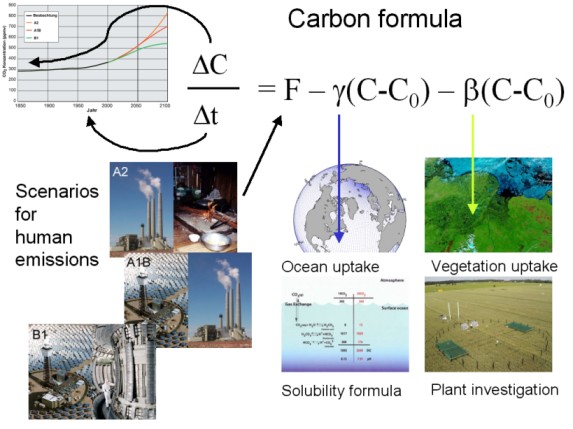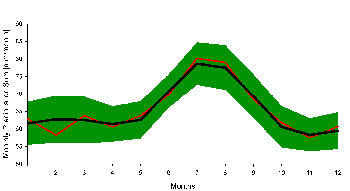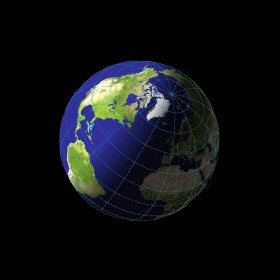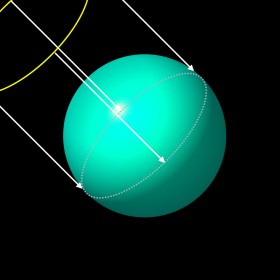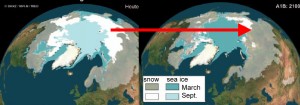 > ACCENT en > Nr 7 March 2006 Climate modeling > C: Simple models
> ACCENT en > Nr 7 March 2006 Climate modeling > C: Simple models
|
Context: Simple models
|
|
The environment around us follows physical laws. These laws are expressed in equations. Nature around us is certainly very complicated. It is much easier to say how much energy is needed to warm up one litre of water from 10°C to 11°C than to describe the climate system in equations. But we can show with a few simple models how it works in general.
|
|
Since the beginning of the industrial revolution we have been using more and more so called fossil fuels like coal, oil and natural gas in order to produce goods and heat our houses. One product of the combustion process is the greenhouse gas carbon dioxide (CO2). Often it is measured in tons of carbon atoms, C, we added to the atmosphere. But not every ton of C added as CO2 to the air remains there forever. Plants take up CO2 in order to grow (sometimes more than they release when they die) and a lot of carbon dioxide is dissolved in the oceans. We can express this in a simple carbon balance equation. |
|
Climate models say that we will have on average more and stronger rain in a warmer world. Why is this? |
|
If the average energy close to the Earth's surface increases and more water evaporates then more water will also fall down again. The water cycle intensifies. However, it cannot easily be concluded from this that we will also have more rain over land. Most water evaporates over the oceans and it depends on the global wind systems as to where it comes down again.
|
|
Although the average temperature has increased over the last 50 years, it has been shown by an analysis of precipitation measurements that there is no trend for the precipitation over land. Strong volcanic eruptions decrease the average precipitation for more than one year, but no conclusions can be made for the general temperature change. |
 |
|
4. Time series of annual mean monthly precipitation sums of the global land surface (Greenland and Antarctica omitted). Blue line: linear trend for the whole period 1951 to 2000, green line: linear trend for the period 1973 to 1987, red line: linear trend for the period 1991 to 2000
|
|
The land surface investigated (excluding Greenland and Antarctica) however makes up only 25% of the Earth's surface. From this we can anticipate that is it not easy to say in which way an intensification in the global water cycle will concern us in the future, although the simple formula and curve above seems to give an easy answer: more rain.
The energy driving our climate system and keeping the Earth warm enough for living comes from the sun. But the Earth needs to send this energy back, otherwise it would become warmer and warmer. Can we express this process in equations? We assume the sun is sending energy to our planet in nearly parallel rays. This is the solar constant L. It is given in power per area and has a value of about 1366 W/m2. If there were no reflection, one quarter of this energy hits each square metre of the atmosphere of the Earth. Why is it one quarter? This is because the full energy does not vertically hit the full Earth surface, but only the cross section of the Earth. We know that half of the Earth is always in the night and the sun radiation under a low angle is weaker. Since the cross section of a sphere is one fourth of the surface of a sphere the total energy on the Earth surface is R = 1/4 L = 342 W/m2. |
|
|
|
|
|
A fraction of the solar radiation however is not taken up by the Earth surface, because it is reflected, for example by clouds, ice and snow. We call this fraction the Earth’s albedo A and it is in the range of 30% of the incoming solar radiation. Therefore, the incoming energy is: |
|
|
|
|
|
The temperature on Earth would continuously increase if the incoming energy would not go out again. |
|
|
|
|
|
Sigma is the Stefan-Boltzmann constant, and Te is temperature of the surface of the Earth. Consequently, we can describe the equilibrium with the following equations: |
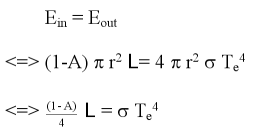 |
|
|
This is the basic energy balance of the Earth without greenhouse gases. If we count in the greenhouse gases a fraction of the infrared radiation on the right side of the equation is sent back, as shown in the figure on the right, but also the Earth's surface temperature increases. The equations become a bit more complicated, but we can imagine that the system can be mathematically described. |
|
|
Global warming causes a melting of polar ice areas. This changes the reflection of sunlight by the Earth, a part of the albedo, A, and therefore changes the radiation balance of our planet.
|
|

